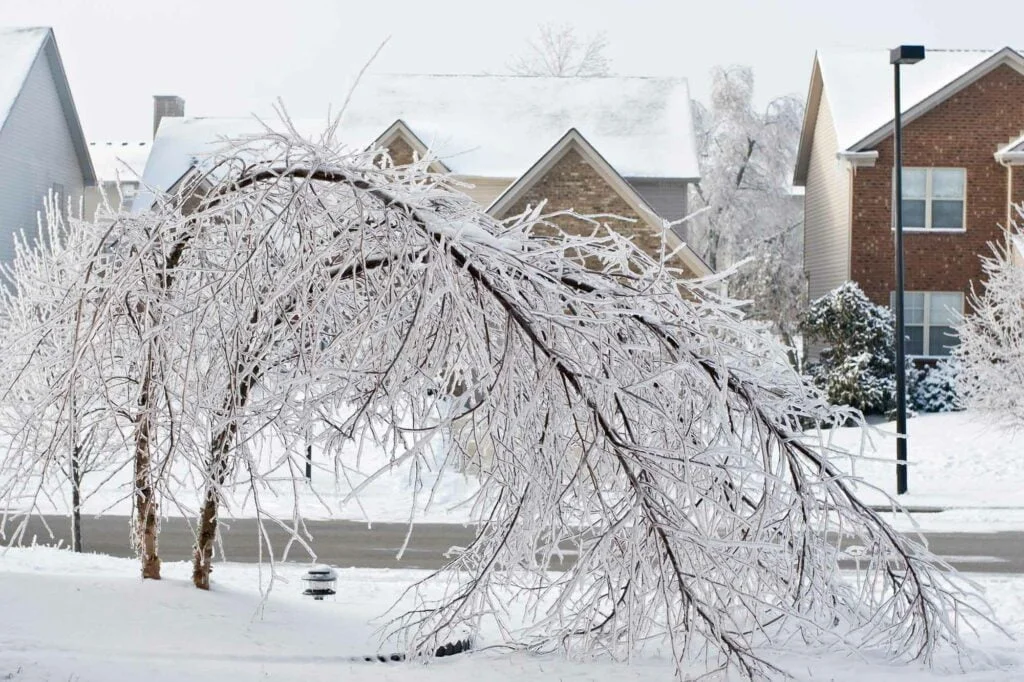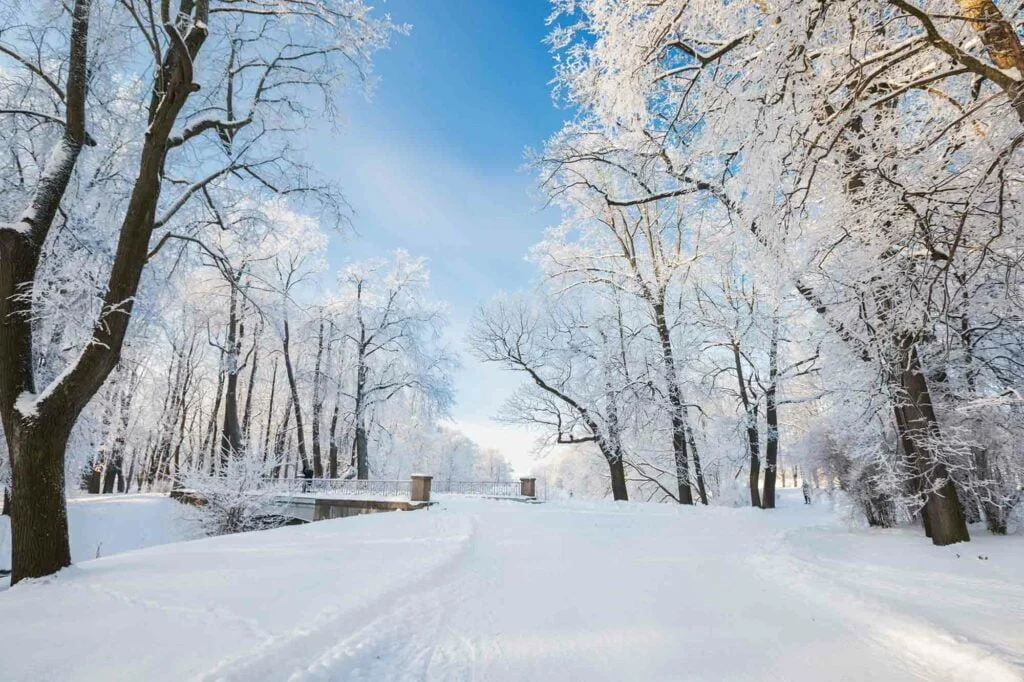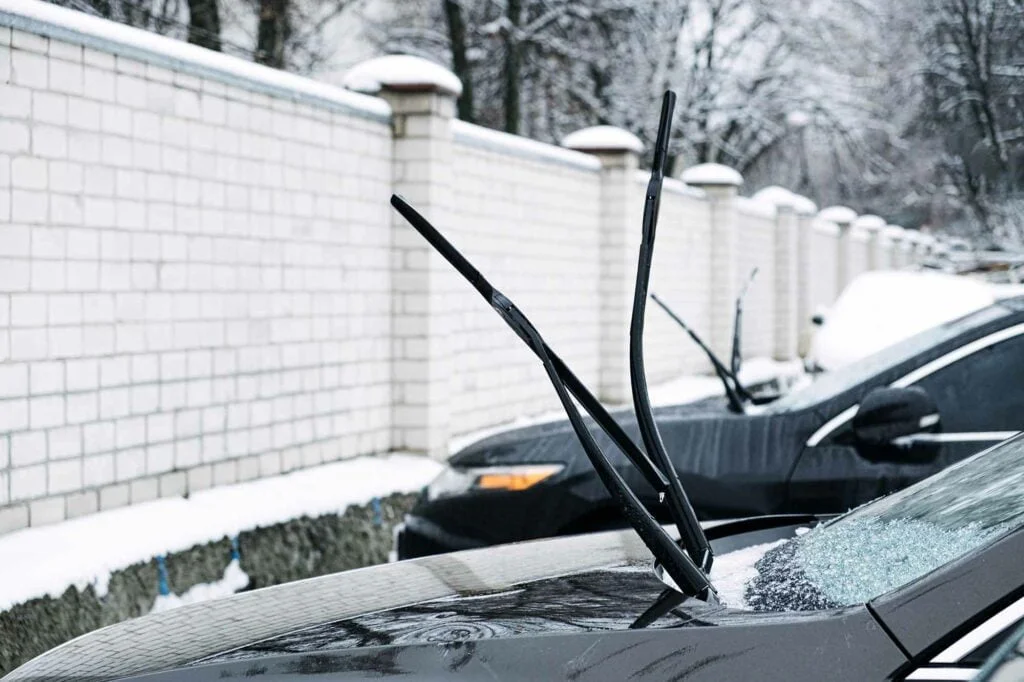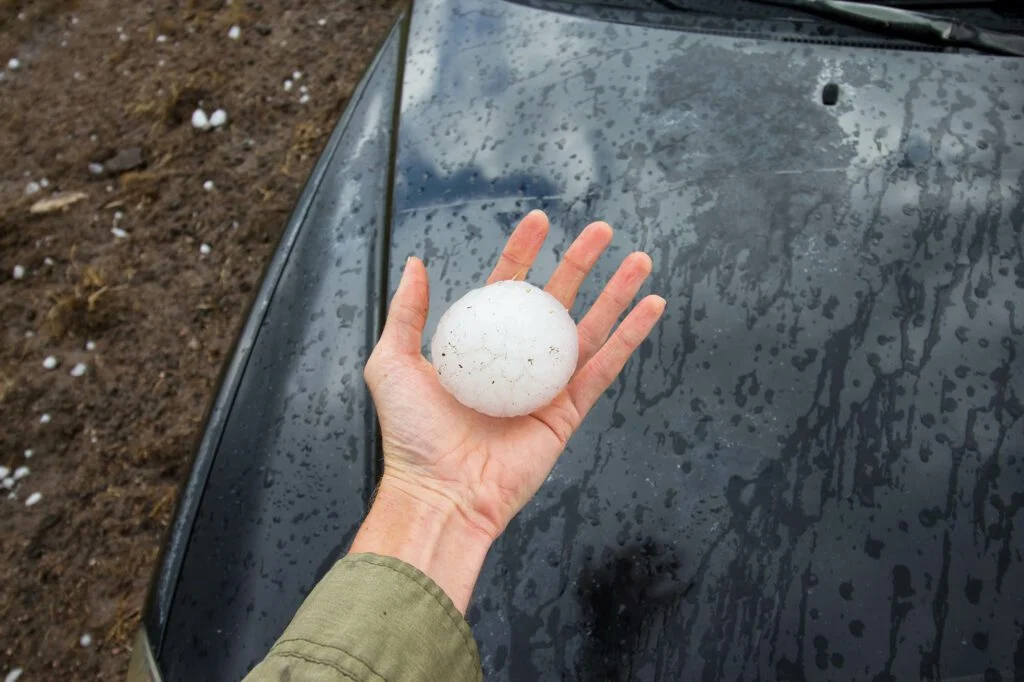Sleet vs freezing rain: which winter weather phenomena would you rather deal with? While both create a whole host of headaches, one is far more hazardous than the other. This blog post will explore the differences between sleet and freezing rain in more detail and which one you need to worry about.
We’ve also added a section to explain the differences between these frozen precipitation types and hail, which primarily occurs in the spring and summer months. As a quick note: we have a more detailed description of both sleet and freezing rain available in our weather glossary, which we recommend you read as well to get a better understanding of both.
What’s the difference between freezing rain and sleet?
Sleet is a type of precipitation that is made up of frozen water. Unlike freezing rain, it freezes far before hitting the ground, sometimes accumulating like snow. On the other hand, freezing rain is a type of precipitation that occurs when liquid rain falls and then freezes as it hits cold surfaces like branches, sidewalks, power lines, cars, and roads. Icy surfaces are slippery and provide little (if any) traction. Even all-wheel-drive vehicles cannot drive on ice because at least one wheel needs traction for AWD to work.

Sleet vs Freezing Rain: How They’re Different
Whether sleet or freezing rain occurs depends on the temperature of the air at different levels above the earth’s surface.
Sleet is a type of precipitation that is common during winter storms. It occurs when the cloud layer is cold enough for snow, but a layer of air above the ground is above freezing. As the ice crystals and snowflakes fall through this layer of warm air, they start to melt. However, as the melting snowflake approaches the ground, it passes through yet another layer of freezing air (or colder), where it refreezes before reaching the ground.
Sleet is less dangerous than freezing rain because it doesn’t freeze on contact and instead bounces off the ground and accumulates (if you can hear the snow falling, it’s sleet!).

On the other hand, freezing rain is a type of precipitation that occurs when the layer of cold air is very shallow and the warm air layer much larger. The melted snowflake never refreezes and instead melts entirely into a cold rain, which freezes on contact with any surface that is below freezing. This can create hazardous conditions, as frozen surfaces can be very slippery.
In addition, freezing rain leaves behind an ice coating everything, including trees and power lines. There is a greater risk of branches breaking off trees and bringing down powerlines if this happens, especially if accumulations are more than a quarter of an inch.
How to Prepare for Sleet and Freezing Rain
How should you prepare for sleet or freezing rain? Sleet is less dangerous than freezing rain, so sleet does not require much preparation. However, if sleet starts to fall, it’s best to get off the roads: sleet will often precede freezing rain as the layer of warmer air aloft grows.
The good thing is you’ll be able to get traction on sleet, much like snow, which is not the case with freezing rain.
Freezing rain requires more preparation than sleet because it can create a dangerous ice coating on trees, power lines, and roads. If freezing rain is in the forecast, it is best to avoid unnecessary travel. Lift the windshield wipers off the windshield to make ice scraping easier and prevent damage to the wipers themselves. Stock up on batteries and nonperishable foods in case power is lost.

If you must venture out, avoid sudden braking or turns, stick to straight roads with a level grade (no hills or turns), and drive slowly. Maintain a significant distance between you and any vehicles around you, even more than you would if driving in snow.
While most freezing rain events are over in a day, much like a snowstorm and merely a nuisance due to the disruption to travel, severe ice storms may take days to recover from.
Generally, ice accumulations need to exceed 1/4″ for significant damage and disruption to start to occur. However, no matter how much ice there is, you will have no traction on an icy surface, so stay inside and wait it out if you can.
Sleet or freezing rain: Which is easier to drive in?
Sleet is less dangerous to drive in than freezing rain because sleet does not freeze everything it touches (for example, if sleet falls on a road that has already been salted or sanded, there will probably be no icy build-up). However, sleet can still create slippery conditions if it accumulates on the road.
Freezing rain is more dangerous than sleet because it can freeze everything it touches, including roads that have already been treated. This makes driving in freezing rain much more complicated and risky.
Sleet vs Hail

Hail is a type of precipitation that occurs in convective storms where precipitation falls first as snow high in the storm cloud, then melts as it passes through the warmer layers, and is pushed back up into the cloud by updrafts within the storm. This process may occur once or several times.
Hailstones form when updrafts carry liquid water droplets upward into colder regions of the atmosphere; they freeze and grow in size as they rise. When the frozen droplets become too heavy to be carried by the updraft, they fall to the ground. Hailstones can range in size from a pea to baseball-sized, and in rare cases, even larger.

